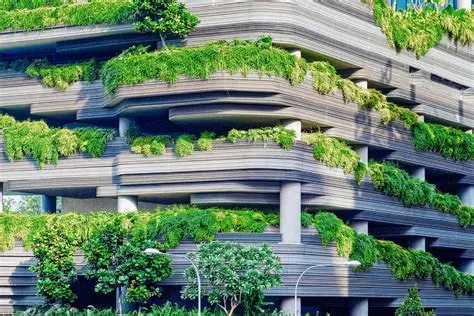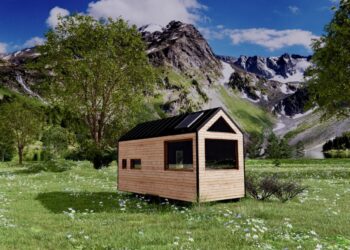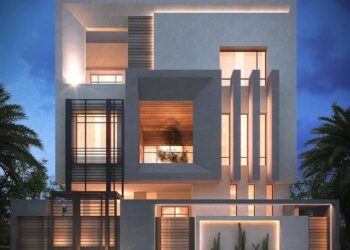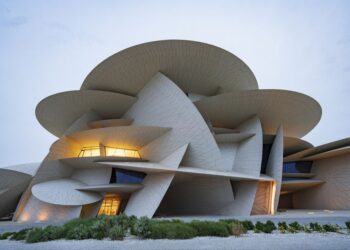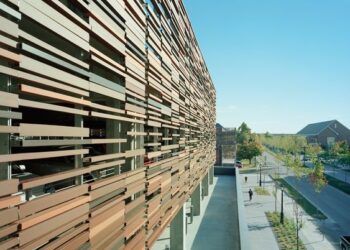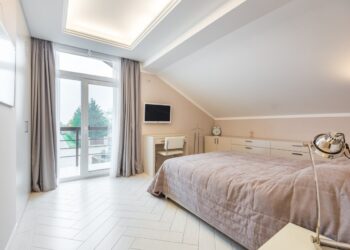The global push toward sustainability has ushered in an era where modern architecture no longer exists in isolation from the environment. Instead, a revolutionary design paradigm known as green architecture is taking center stage—one that harmoniously integrates nature with innovative design.
This comprehensive article explores the myriad elements of green architecture, examining its principles, benefits, challenges, and future prospects. It also delves deep into how architects worldwide are rethinking urban planning and building design by blending the best of natural environments with cutting-edge technology and sustainable practices.
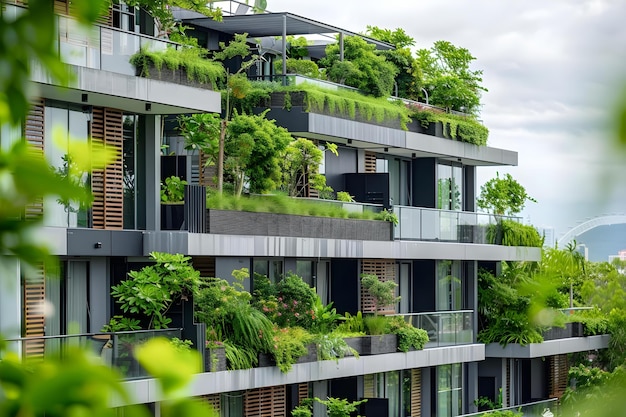
As urbanization continues to surge, cities struggle with environmental degradation, high energy consumption, and increasing waste production. In response, green architecture has emerged as a beacon of hope, offering a balanced solution that marries environmental responsibility with aesthetic appeal. Green architecture seeks to minimize the ecological footprint of constructions while maximizing energy efficiency, indoor air quality, and overall comfort for its occupants.
The essence of green architecture lies in its commitment to sustainability—using renewable energy sources, recycling materials, and adopting designs that both respect the natural landscape and foster a healthy coexistence between human habitats and nature.
This article is an in-depth exploration of how green architecture redefines modern building practices and offers a blueprint for future urban development.
Principles of Green Architecture
At the heart of green architecture are several core principles that guide the planning, design, and construction of environmentally responsible structures. These principles serve as the foundation for projects that aim to achieve long-term sustainability.
Integration with the Natural Environment
Green architecture is defined by its seamless integration with nature. Architects aim to create structures that are not imposed on the landscape but rather exist as extensions of the natural world. This can be achieved through:
A. Site-Responsive Design: Analyzing the local climate, topography, and vegetation to inform the building layout.
B. Landscape Integration: Incorporating natural elements such as gardens, green roofs, and water features that enhance biodiversity.
C. Maximized Natural Light: Designing facades and openings that allow abundant sunlight, thereby reducing the need for artificial lighting.
Energy Efficiency and Renewable Resources
One of the most important facets of green architecture is its focus on energy efficiency and the use of renewable resources. Architects leverage advanced technologies to ensure that buildings consume less energy while harnessing sustainable power sources.
A. Solar and Wind Energy: Installing solar panels and wind turbines to generate clean energy.
B. High-Performance Insulation: Utilizing materials that prevent heat loss during colder months and reduce cooling demands during warmer seasons.
C. Energy-Efficient Systems: Incorporating smart heating, ventilation, and air conditioning (HVAC) systems that adjust to environmental conditions in real time.
Sustainable Material Use
The materials chosen for construction have a profound impact on a building’s overall sustainability. Green architecture emphasizes the use of eco-friendly, recycled, and locally-sourced materials, reducing both environmental impact and transportation emissions.
A. Recycled Materials: Using repurposed steel, glass, and plastics to minimize waste.
B. Local Sourcing: Opting for materials produced within the region to lower the carbon footprint associated with transportation.
C. Low-Emission Products: Selecting products that limit volatile organic compound (VOC) emissions and reduce indoor air pollution.
Water Efficiency and Management
Water is an essential resource, and sustainable buildings implement strategies to conserve it. Efficient water use is not only vital for the environment but also for reducing utility costs.
A. Rainwater Harvesting: Designing buildings to capture and store rainwater for non-potable uses.
B. Greywater Recycling: Reclaiming water from sinks and showers to irrigate landscapes or flush toilets.
C. Water-Efficient Fixtures: Installing faucets, toilets, and irrigation systems that minimize water wastage.
Indoor Environmental Quality
Creating a healthy indoor environment is as crucial as ensuring environmental sustainability externally. Green architecture promotes designs that support the well-being of its occupants by enhancing air quality, natural lighting, and thermal comfort.
A. Natural Ventilation: Utilizing design techniques that promote cross-ventilation and reduce dependency on mechanical systems.
B. Non-Toxic Materials: Selecting paints, adhesives, and finishes that have low or zero VOC emissions.
C. Ergonomic Space Planning: Designing interiors that promote comfort and productivity, with ample natural daylight and views of nature.
Historical Context and Evolution
The concept of green architecture is not entirely new. Traditional building techniques have long recognized the importance of working with nature.
Historical structures—from ancient temples built with natural ventilation to vernacular homes designed to stay cool in hot climates—reflect an intrinsic understanding of sustainable design.
In recent decades, however, technological advancements and growing environmental awareness have catalyzed a renaissance in sustainable architecture.
Modern green buildings combine time-honored principles with innovative technologies, bridging the gap between tradition and modernity.
Benefits of Green Architecture
Embracing green architecture yields numerous advantages that span environmental, economic, and social realms.
Environmental Benefits
Green architecture significantly reduces the negative impacts of construction and operation on the natural environment. Some key environmental benefits include:
A. Reduced Carbon Footprint: By incorporating renewable energy and sustainable materials, buildings produce fewer greenhouse gas emissions over their lifespans.
B. Enhanced Biodiversity: Integration of green spaces and natural elements fosters ecosystems that support local flora and fauna.
C. Conservation of Natural Resources: Energy and water efficiency measures minimize waste and ensure responsible resource use.
Economic Advantages
While the initial investment in green architecture might be higher, its long-term economic benefits are substantial.
A. Lower Operating Costs: Energy-efficient designs reduce utility bills, and water-saving measures decrease consumption costs.
B. Increased Asset Value: Sustainable buildings are attractive in the real estate market due to their reduced operating costs and future-proof design.
C. Incentives and Tax Benefits: Many governments offer tax credits and subsidies for green building projects, offsetting initial expenditures.
Social and Health Impacts
The benefits of green architecture extend into the social sphere by enhancing the quality of life for building occupants and communities.
A. Improved Health and Well-Being: Enhanced indoor air quality and ample natural light contribute to physical and mental well-being.
B. Enhanced Productivity: Comfortable and healthy work environments have been linked to increased productivity in offices and commercial spaces.
C. Community Engagement: Green buildings often become community landmarks, fostering social interaction through shared green spaces and sustainable practices.
Challenges Facing Green Architecture
Despite its numerous advantages, green architecture faces several challenges that must be overcome to broaden its adoption.
Cost Constraints
One of the most frequently cited challenges is the higher upfront cost of sustainable materials and technologies. Although these investments often pay off over the long term through lower operating costs, the initial expenditure can be prohibitive.
A. High Initial Investment: Advanced technologies and eco-friendly materials can be expensive.
B. Return on Investment Uncertainty: While long-term savings are expected, the payback period may be too prolonged for some investors.
C. Budget Limitations: Smaller projects or those in developing regions might lack the financial resources required for green retrofitting or sustainable construction.
Technological Integration
Modern green building design relies heavily on advanced technology to achieve its sustainability goals. However, the integration of these systems is not without challenges.
A. Complex Installation: Incorporating smart systems like solar panels, energy storage, and automated controls requires specialized expertise.
B. Maintenance Challenges: High-tech systems can sometimes be prone to breakdowns and require regular maintenance to operate efficiently.
C. Compatibility Issues: Integrating new sustainable technologies with existing building infrastructure can present technical hurdles.
Regulatory and Market Barriers
Regulatory frameworks and market dynamics also play a significant role in the broader adoption of green architecture. Outdated codes and standards may not support innovative designs, while market demand for sustainable buildings is still evolving.
A. Outdated Building Codes: Local regulations may not encourage or even allow for the latest sustainable practices.
B. Market Readiness: Although demand for green buildings is rising, many markets remain traditional and risk-averse when it comes to adopting new technologies.
C. Resistance to Change: Both developers and consumers may be hesitant to diverge from conventional construction practices that they know well.
Innovations Driving the Future of Green Architecture
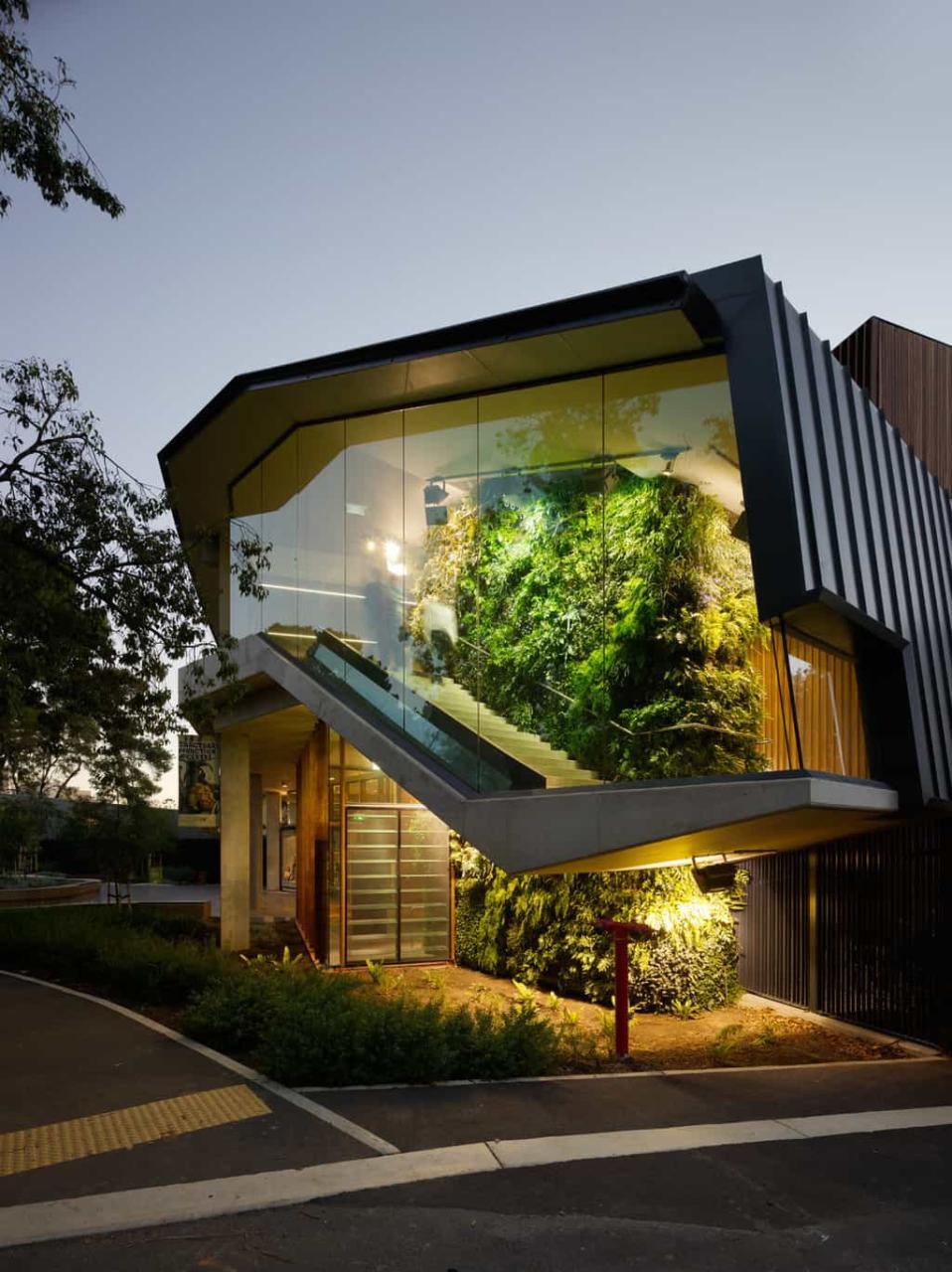
The future of green architecture is bright, fueled by ongoing innovations that promise to overcome existing challenges and further reduce the environmental impact of buildings.
Smart Building Technologies
The rise of smart building technologies has revolutionized how architects approach sustainable design. These technologies enable the constant monitoring and adjustment of building systems to optimize energy usage and overall efficiency.
A. Internet of Things (IoT): Sensors and connected devices provide real-time data on energy consumption, indoor air quality, and structural integrity.
B. Artificial Intelligence (AI): AI algorithms analyze data to adjust heating, cooling, and lighting systems automatically, ensuring optimal performance with minimal waste.
C. Building Management Systems (BMS): Integrated platforms that manage all aspects of building operations, from security to energy use, offer unprecedented control and efficiency.
Renewable Energy Advancements
Renewable energy remains a cornerstone of green architecture. Breakthroughs in technology are making sustainable energy sources more accessible and reliable.
A. Next-Generation Solar Panels: Higher efficiency photovoltaic cells allow buildings to generate more power from the same surface area.
B. Advanced Wind Turbines: Compact and quiet wind turbines are increasingly being integrated into urban landscapes.
C. Energy Storage Solutions: Improved battery technologies ensure that energy generated during peak production can be stored and used during off-peak hours, reducing reliance on fossil fuels.
Sustainable Materials and Construction Techniques
Research in material science is unlocking new possibilities for reducing the environmental impact of construction. Eco-friendly materials and innovative construction techniques are not only sustainable but often offer improved performance.
A. Biodegradable Materials: Innovations in bio-based composites and biodegradable building materials minimize environmental waste.
B. 3D Printing in Construction: This advanced technology enables precise fabrication of building components, reducing material waste and allowing for unique design elements.
C. Modular Construction: Pre-fabricated modules reduce on-site construction time and material waste, while also allowing for easier upgrades and repairs.
Urban Green Infrastructure
Modern cities are gradually incorporating green infrastructure as a central component of urban planning. This means designing urban areas to include natural ecosystems that work alongside built environments.
A. Green Roofs and Walls: These features not only provide insulation and reduce energy consumption but also create habitats for urban wildlife.
B. Urban Farming: Integrating agricultural practices into city structures fosters local food production and reduces carbon emissions associated with transport.
C. Water-Sensitive Urban Design: Techniques such as permeable pavements and rain gardens help manage stormwater and reduce urban flooding.
Case Studies of Successful Green Architecture
Examining real-world examples can provide insights into how green architecture is changing urban landscapes across the globe. Here are a few exemplary projects that illustrate the successful integration of nature and design:
The Edge, Amsterdam
One of the most advanced green buildings in the world, The Edge in Amsterdam, leverages smart technologies to achieve exceptional energy efficiency.
A. Smart Energy Management: The building’s integrated systems monitor and adjust energy use in real time.
B. Green Building Materials: Sustainable construction materials reduce the overall carbon footprint.
C. User-Centric Design: The office environment is designed to promote wellbeing, with an abundance of natural light and indoor greenery.
Bosco Verticale, Milan
Bosco Verticale (Vertical Forest) is an iconic residential project that integrates extensive plant life directly into high-rise structures.
A. Vertical Greenery: Over two thousand trees and shrubs improve air quality and mitigate urban heat.
B. Climate Mitigation: The building’s design reduces energy use by naturally regulating temperature fluctuations.
C. Community Impact: This project has inspired numerous similar developments worldwide, emphasizing the social benefits of sustainable building practices.
One Central Park, Sydney
One Central Park is a mixed-use development that embodies sustainable urban planning, featuring extensive green spaces and innovative design elements.
A. Integrated Green Spaces: The development includes parks, gardens, and green corridors that extend throughout the complex.
B. Renewable Energy Integration: Solar panels and energy-efficient systems enable lower operating costs.
C. Water Management: State-of-the-art systems ensure water is efficiently recycled and conserved.
Strategies for Implementing Green Architecture
For developers and architects looking to adopt green practices, a multi-pronged strategy is essential to achieving both sustainability and economic viability. Below are some recommended strategies:
A. Comprehensive Site Analysis:
-
Assess environmental conditions, such as solar exposure, wind patterns, and local ecosystems, to inform design decisions.
-
Use this data to guide the orientation and layout of the building for maximum efficiency.
B. Integration of Smart Technologies:
-
Employ IoT devices to monitor building performance continuously.
-
Implement intelligent systems that can autonomously adjust environmental controls to optimize energy use.
C. Selection of Eco-Friendly Materials:
-
Choose materials with low embodied energy and high durability.
-
Opt for recycled or locally sourced options to reduce transportation emissions and support local economies.
D. Long-Term Sustainability Planning:
-
Incorporate future-proofing measures into the design to allow for upgrading of technologies as new innovations emerge.
-
Plan for building adaptability so that the structure can accommodate changing needs over time.
The Role of Policy and Government Incentives
Government policies and local regulations can be powerful drivers for the widespread adoption of green architecture. Policymakers around the world are progressively recognizing the need for sustainable development and are enacting measures to promote eco-friendly construction.
A. Regulatory Frameworks:
-
Implement building codes that emphasize energy efficiency and sustainable practices.
-
Update zoning and planning regulations to support the inclusion of green spaces in urban environments.
B. Financial Incentives:
-
Provide tax credits, grants, and low-interest loans for sustainable building projects.
-
Encourage public-private partnerships that make green construction more accessible and affordable.
C. Educational Initiatives:
-
Increase awareness among developers, architects, and the general public about the benefits of green architecture.
-
Support training programs and workshops focused on sustainable design practices.
Future Trends in Green Architecture
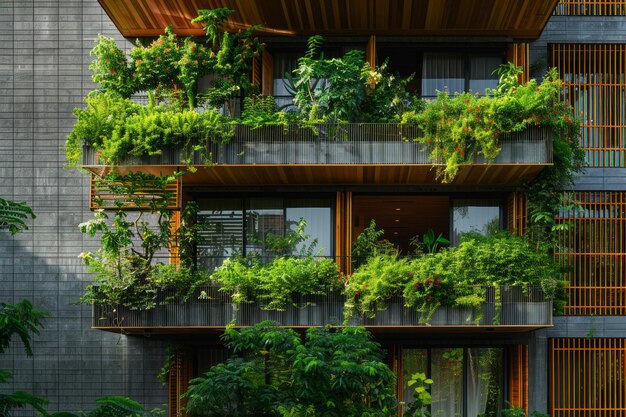
The evolution of green architecture is a dynamic process, influenced by emerging technologies, shifting market demands, and global environmental challenges. Looking ahead, several trends are poised to shape the future of this field.
A. Increased Adoption of Circular Economy Principles:
-
Design buildings that facilitate the reuse, recycling, and repurposing of materials.
-
Create systems for the systematic recovery of energy and resources during demolition or renovation phases.
B. Integration of Biophilic Design:
-
Strengthen the connection between indoor environments and nature by incorporating natural elements into every facet of the design.
-
Foster wellness and productivity through strategic use of natural light, vegetation, and organic forms.
C. Advances in Prefabrication and Modular Construction:
-
Employ off-site manufacturing techniques to reduce waste and speed up the building process.
-
Allow for greater flexibility in design and easier future upgrades or modifications.
D. Resilient Infrastructure Against Climate Change:
-
Design buildings to withstand extreme weather conditions and other environmental stresses.
-
Incorporate adaptive features that allow the structure to respond dynamically to climate variability.
Conclusion
Green architecture is not merely a fleeting trend—it is a transformative movement that redefines the relationship between human-built environments and the natural world.
By integrating nature into design through sustainable practices, innovative technology, and responsible use of resources, green architecture offers a promising pathway toward reducing our environmental footprint while enhancing quality of life.
The benefits of embracing green architecture are far-reaching. From diminished energy consumption and reduced waste to improved indoor environmental quality and enhanced urban biodiversity, the positive impacts extend to the environment, the economy, and society at large.
However, realizing these benefits requires overcoming substantial challenges such as high initial costs, technological integration complexities, and regulatory hurdles. With ongoing advancements in smart building technologies, renewable energy, and sustainable materials, the future of green architecture appears both dynamic and promising.
Architects, developers, and policymakers alike must collaborate to ensure that our built environments are not only functional and aesthetically pleasing but also serve as responsible stewards of the natural world.
As our world grapples with environmental challenges, green architecture stands out as a beacon of progress a design philosophy that truly integrates nature and design for the benefit of all.
By continuing to innovate, invest in sustainable practices, and embrace new technologies, the architectural community will undoubtedly play a crucial role in shaping a greener and more sustainable future for generations to come.

